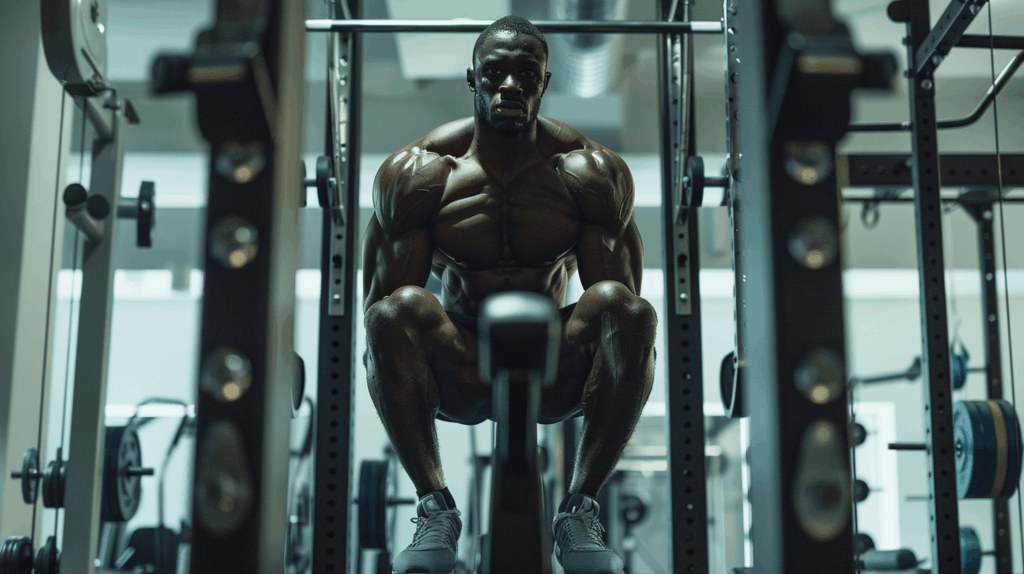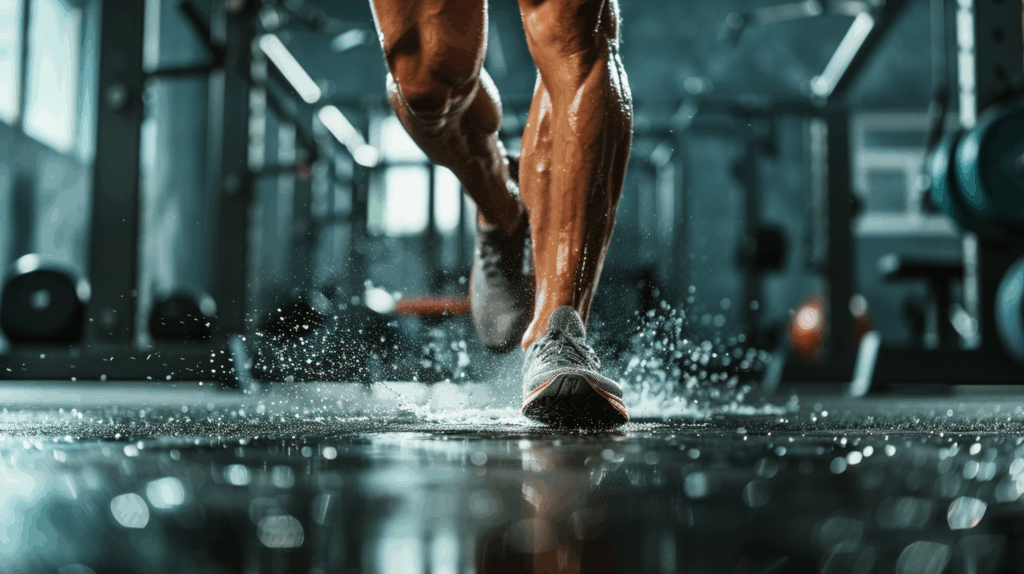Releasing stronger legs begins with focusing on the vastus medialis, a key muscle for knee stability and leg strength. This inner thigh muscle plays a crucial role in knee extension, patella stabilization, and injury prevention. Effective exercises such as squats, lunges, and step-ups target this area, enhancing overall lower body performance. Maintaining proper form and gradually increasing resistance are essential for peak results. Avoid common pitfalls like neglecting warm-ups or ignoring muscle engagement to guarantee progress. With the right approach, you can markedly strengthen your legs and improve your athletic capabilities. More insights await on maximizing your workouts for better results.
Key Takeaways
- Strengthening the vastus medialis enhances knee stability, reducing the risk of injuries during physical activities.
- Incorporate exercises like squats, lunges, and step-ups to effectively target the vastus medialis.
- Focus on proper form and gradual resistance increases for optimal strength gains.
- Maintain a variety of exercises to promote balanced development and prevent muscle imbalances.
- Ensure adequate recovery time and cooldowns to enhance flexibility and overall muscle performance.
Importance of Vastus Medialis

While often overlooked, the vastus medialis plays an essential role in maintaining knee health and overall lower body function. This muscle, located on the inner thigh and part of the quadriceps group, is vital for knee extension and patella stabilization.
Its significance extends beyond basic movement; the vastus medialis contributes to injury prevention by ensuring proper alignment and support during activities such as walking and climbing stairs.
Understanding its muscle anatomy enhances awareness of its function in athletic performance, as it aids in running and jumping.
Benefits of Strengthening Vastus Medialis
Strengthening the vastus medialis offers numerous advantages that extend beyond aesthetic appeal. This essential muscle plays a significant role in supporting knee joint stability, which is imperative for injury prevention, especially during physical activities.
By enhancing the strength and function of the vastus medialis, individuals can experience reduced pain and discomfort in their knees, allowing for smoother movements in daily tasks and sports.
In addition, a well-conditioned vastus medialis contributes to improved athletic performance, particularly in activities that require explosive power, such as running and jumping.
Effective Exercises for Vastus Medialis

To effectively target and enhance the vastus medialis, incorporating specific exercises into your workout routine is essential.
Understanding the vastus medialis anatomy is important, as it plays a significant role in knee stability and function.
Effective exercises include squats and lunges, which activate this muscle through dynamic movement.
Leg presses and step-ups also emphasize the inner thigh, contributing to strength gains.
Wall sits serve as an excellent isometric exercise, engaging the vastus medialis while promoting endurance.
By integrating these movements, you’ll not only enhance muscle development but also implement injury prevention strategies that safeguard your knees.
Embracing these techniques can liberate your physical potential, allowing for improved performance in daily activities and sports alike.

Exercise Techniques and Tips
When engaging in workouts that target the vastus medialis, employing proper techniques is essential for maximizing effectiveness and minimizing injury risk. Focus on muscle engagement and guarantee you maintain correct form throughout each exercise. Incorporating a variety of exercises not only promotes balanced development but also keeps your routine engaging.
| Technique | Description |
|---|---|
| Maintain Form | Prioritize correct posture and alignment. |
| Gradual Resistance | Increase weights progressively to build strength. |
| Mind-Muscle Focus | Concentrate on the vastus medialis during each movement. |
| Adequate Recovery | Allow your muscles time to recover to prevent fatigue. |
Common Mistakes to Avoid
Often overlooked, common mistakes during workouts targeting the vastus medialis can greatly hinder progress and increase the risk of injury. One of the most critical errors is neglecting proper warming up; this step is essential for preparing the muscles and joints, promoting peak performance.
Additionally, using improper form can lead to ineffective workouts and strain other muscles, exacerbating muscle imbalances. Overtraining without allowing sufficient recovery also poses a significant risk, leading to fatigue and diminishing returns.
Frequently Asked Questions
How Long Does It Take to See Results From Vastus Medialis Workouts?
Results from vastus medialis workouts typically manifest within four to six weeks, contingent upon individual factors such as exercise progression and consistency. Understanding vastus medialis anatomy enhances targeted training, optimizing strength and stability in the legs.
Can I Strengthen Vastus Medialis Without Gym Equipment?
Yes, you can strengthen the vastus medialis without gym equipment through bodyweight exercises. Incorporating home routines such as squats, lunges, and step-ups effectively targets this muscle, promoting stability and enhancing overall leg strength.
Are There Any Contraindications for Vastus Medialis Exercises?
While vastus medialis exercises are beneficial, contraindications include pre-existing knee injuries or conditions. Implementing exercise modifications and prioritizing injury prevention strategies can enhance safety and effectiveness, ensuring a balanced approach to leg strengthening and overall fitness.
How Often Should I Train My Vastus Medialis Weekly?
Research indicates that training frequency for the vastus medialis should ideally be two to three times weekly. This approach optimizes muscle engagement and supports overall leg strength, aligning with the complexities of vastus medialis anatomy.
What Are Signs of Overworking the Vastus Medialis?
Signs of overworking the vastus medialis include persistent pain, swelling, and reduced range of motion. Effective pain management and recovery techniques, such as rest, ice application, and targeted stretching, are essential for restoring muscle function and preventing injury.
Conclusion
Incorporating targeted workouts for the vastus medialis leads to enhanced knee stability, improved athletic performance, and reduced injury risk. For instance, a hypothetical case study of an amateur runner reveals that after six weeks of focused vastus medialis strengthening, the runner experienced a significant decrease in knee pain and improved running efficiency. This underscores the importance of dedicated exercises in achieving stronger legs and a more active lifestyle. Prioritizing vastus medialis training can yield substantial long-term benefits.














